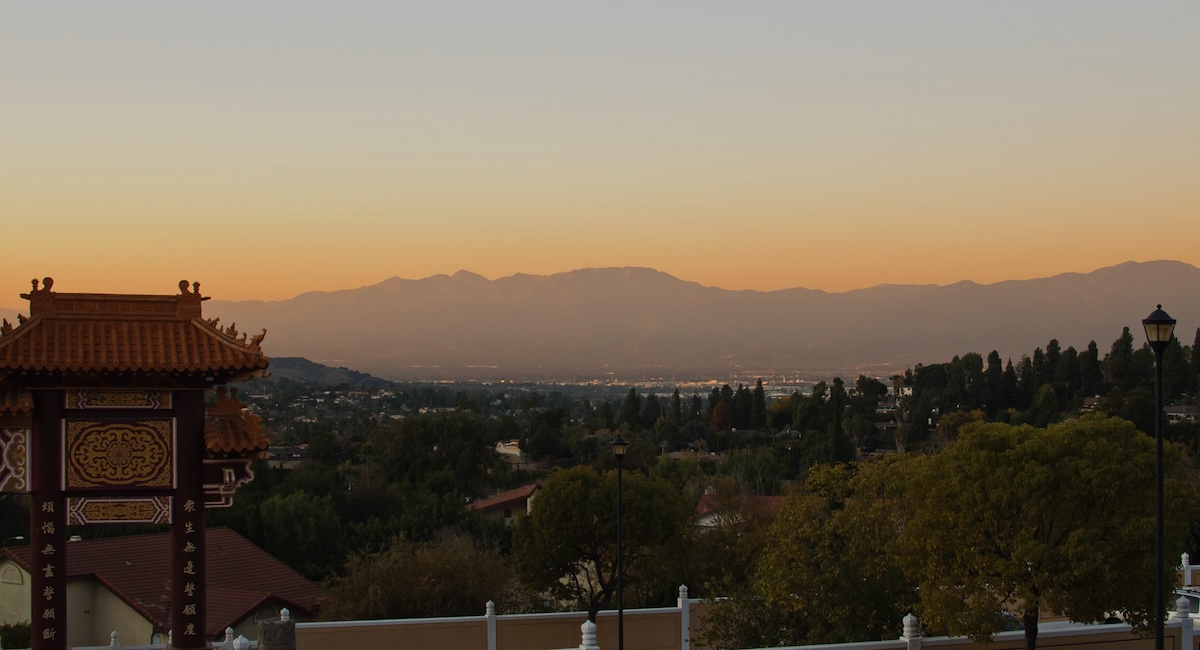By Alicia Wang | World Journal
As temperatures rise in Southern California, communities and experts are paying more attention to green spaces, shade and parks, all of which dramatically improve the quality of life in our neighborhoods.
For the Chinese-Speaking community, largely concentrated in the San Gabriel Valley area of Los Angeles, access to green spaces varies greatly from city, creating disparities within the same community, according to a map of shade coverage in Los Angeles county, published by Loyola Marymount University.
The more affluent the community and the closer to Angels National Forest, the more shade exists, with Duarte and Monrovia having the most green cover or canopy, followed by Pasadena, South Pasadena, Glendale, and Arcadia. San Gabriel, Alhambra, Temple City, and Monterey Park fall in the middle, with the cities of Rosemead and El Monte having the least amount of shade.
According to a recent article in Science Advances, people can live up to 2.5 years longer if they are exposed to green spaces due to changes in their blood and genetic modification which responds to behavior and environment.
The study looked at 900 people across the U.S. to compare the effect of having access to a greener environment on a person’s actual biological age. The study found that green space improves the biomolecules in people’s blood, leading to a longer life. The study spanned 20 years and compared changes in DNA in people’s blood in two different living environments.
Even among disadvantaged areas with similar socioeconomic characteristics, the study concluded that “greater exposure to greenness showed stronger associations among participants with higher neighborhood deprivation scores.”
A recent study by the University of California, Los Angeles (UCLA), comparing green space with human longevity in Los Angeles County, found that about two-thirds of African Americans and Hispanics in L.A. County live in areas with relatively little green space, and their longevity suffers as a result. For example, the study says, “residents in affluent and better covered areas like Beverly Hills had life expectancies as high as 90, while just 15 miles away, in South Los Angeles communities, median life expectancy is 77.”
After controlling for variables that affect human longevity, such as smoking, obesity, and physical inactivity, the study made several key findings: In Los Angeles County, which has a population of about 10 million and covers 4,000 square miles, if all areas of the county could achieve the current median level of green space, the county’s life expectancy would increase cumulatively by 573,000 years to 908,800 years; if all parks increased to today’s median level of green space, the county’s life expectancy would increase by 570,000 to 908,800 years; and if all parks increased to today’s median level of green space, the county could increase its life expectancy to 908,000 years.
If all parks were increased to today’s median level (54 acres), the county’s life expectancy would increase by 155,300 years, with 110,000 of those years coming from the Hispanic and African American communities.
Life expectancy in the U.S. has been increasing for more than 50 years, but in the last decade it has been declining, linked to the drug crisis and the Covid pandemic.
“It’s critical to understand modifiable environmental factors, such as access to green spaces, that can increase life expectancy,” said UCLA doctoral candidate Rachel Connolly, lead author of the study.
These various effects of the tree shade canopy and the different access to it in the Chinese-Speaking community, speak to different access to a healthy environment, and socioeconomic status seems to have a lot to do with this, suggesting a gap between more and less affluent residents in this community.
This story was produced as part of the Greening of LA ethnic media project, a collaboration between EMS and UCLA/LENS.
Journalist Alicia Wang wrote this fellowship story for World Journal, the most influential Chinese language newspaper in the United States and one of the largest Chinese language newspapers outside of Greater China, with a daily circulation of 350,000.
“Report Highlights Disparities in Access to Park, Green Space for San Gabriel Valley Chinese Community” discusses a new UCLA study which, correlating green space with human longevity in LA County, found that if all areas LA county could achieve its median level of green space, the county’s life expectancy would increase by 573,000 years to a cumulative 908,800 years — particularly for African Americans and Latinos countywide, two thirds of which live in areas with relatively little green space.




